Beverly Gray's Blog: Beverly in Movieland, page 4
May 23, 2025
Lost (and Not So Lost) Causes: “Newsies”
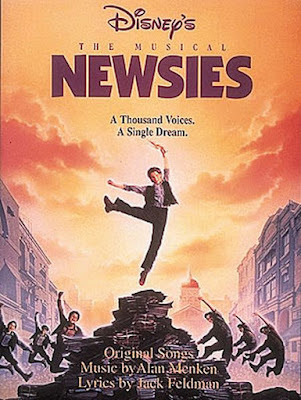 When a musical called Newsies was released by Disneyin 1992, it was a box office bomb. This despite the presence in the cast of asexy Ann-Margret, an earnest Bill Pullman, an oily Robert Duvall (playing newspapertycoon Joseph Pulitzer), and—in a bravura role—a very young and dashing ChristianBale. The story was a good one, drawn from an 1899 strike by New York Citynewsboys furious that the city’s newspaper publishers were trying to bolstertheir own profits by increasing the sum they charged these scruffy street kidsfor the privilege of hawking their papers. Kenny Ortega, well known forchoreographing such popular films as Dirty Dancing, signed on to makehis directing debut. Alan Menken, who contributed memorable tunes to Disneyhits like The Little Mermaid and Aladdin, came aboard to writethe score.
When a musical called Newsies was released by Disneyin 1992, it was a box office bomb. This despite the presence in the cast of asexy Ann-Margret, an earnest Bill Pullman, an oily Robert Duvall (playing newspapertycoon Joseph Pulitzer), and—in a bravura role—a very young and dashing ChristianBale. The story was a good one, drawn from an 1899 strike by New York Citynewsboys furious that the city’s newspaper publishers were trying to bolstertheir own profits by increasing the sum they charged these scruffy street kidsfor the privilege of hawking their papers. Kenny Ortega, well known forchoreographing such popular films as Dirty Dancing, signed on to makehis directing debut. Alan Menken, who contributed memorable tunes to Disneyhits like The Little Mermaid and Aladdin, came aboard to writethe score.hat the Disney folks had in mind was a sort ofnineteenth-century West Side Story, with ragtag youngsters expressingtheir social angst by singing and dancing through the streets of Manhattan. Agood idea, perhaps, but in its execution not terribly convincing. Though thestory of the strike is a real one, the production here seems clearly to belongto the backlot of a movie studio. This despite the fact that the dance moves,in particular, are thrilling, especially in a rousing number called “Seize theDay.” (I’m not sure these street urchins would know the English-languagetranslation of the Latin “carpe diem,” but never mind.) Perhaps this should have been a Broadway showfrom the beginning: when a revised version did open on the Great White Way in2011, it ran for three years, racking up numerous nominations and awards.
I caught Newsies on a Disney-issued DVD from 2002,courtesy of my local library. (Public libraries, as I hope everyone knows, area great source of DVDs as well as books.). In the usual manner of DVDs issuedby movie studios, the feature film I watched was preceded by enthusiasticpromos for other movies that were, we were told, coming soon. What caught myattention was that each of the promos preceding Newsies was for a Disneyanimated feature that was a follow-up to a classic Disney hit. I was urged tosee such movies as a Peter Pan sequel, Cinderella 2, and 101Dalmatians II. Every single one of these breathlessly-hyped flicks was, Inoted, apparently hand-drawn, in the traditional Disney way. Nocomputer-generated animation here!
Which made it seem that Disney—seven years after Pixardebuted Toy Story, the world’s first fully computer-animated featurefilm—was still trying to deny that the computer had changed animation forever.Clearly, this attempt at denial didn’t work. I doubt any of the sequelspromoted on this DVD made the company much money. Four years later, in 2006,the Disney folks announced that they were buying Pixar, and folding it into theDisney universe, while also experimenting with ways to use computers on theirown in-house projects.
Personally, I love the look of hand-drawn animation (thoughI’m hardly opposed to the use of computers to simplify the animator’s job). Buton the Newsies 2002 DVD, Disney seems to be stuck in the past, both interms of technique and subject matter. The contents of the DVD imply thatDisney wants to turn back the clock to a time that once was (or, perhaps, neverreally was). A time when animators drew by hand, and when big splashy musicalsthat aimed to be a cross between West Side Story and Oliver! werebig hits at your local movie house.
May 20, 2025
Simon Says: Watch Me Take on the World of Ballet in “Etoile”

I’ve always been intrigued bySimon Callow. There seems to be nothing he can’t do. In 1979 he set the theatreworld abuzz with his portrayal of cocky young Wolfgang Amadeus Mozart in PeterShaffer’s Amadeus. (By the time the play became an Oscar-winning film,he had aged out of the part and taken a lesser role.) He later played memorablemostly-comic roles in classic British costume dramas like A Room with a View(as the jovial Reverend Beebe), Howards End, and Shakespeare inLove. I particularly relish his unforgettable performance in FourWeddings and a Funeral, one that prompts the film’s most touching moment.Clearly a man who is intellectually restless, Callow has tried directing too,and has published biographies of such major artistic figures as Oscar Wilde,Charles Laughton, Richard Wagner, and Orson Welles. I read the first volume ofhis Welles book, The Road to Xanadu¸ and found it a fascinating explorationof Welles as an actor, seen through the eyes of a kindred spirit.
But it was Callow’s first bookBeing an Actor (originally 1984, but recently updated), that had a smallimpact on my own life. When I was still in my Roger Corman years, this in-depthprimer on the theatrical arts was enthusiastically recommended to me by theactor David Birney. Having read it, I couldn’t wait to meet Callow, and theopportunity presented itself when he came to L.A. to direct an obscure drama atthe Los Angeles Theatre Center. He was happy to be interviewed by me, partlybecause he hoped for an introduction to Roger Corman. (Yes, he had a filmproject in mind, but ultimately Roger didn’t cotton to it.) In any case, that’show I ended up having a sumptuous breakfast with Simon in the dining roomof L.A.’s venerable Biltmore Hotel. Tomy not very great surprise, this was a man who truly enjoyed good food. I thinkit’s fair to say he has a real appetite for life in all its forms.
I’ve been thinking of Simonof late because I just finished watching Etoile, the Amazon Primemini-series in which he has a central role. It was created by Amy Sherman-Palladino and husband Daniel Palladino,who both write and direct. As the folks responsible for Gilmore Girls andmore recently The Marvelous Mrs. Maisel, both know how to put together aseries that blends comedy and human drama. Set in the ballet world, Etoile positsthat major dance companies in Paris and New York City trade prime talents for aseason, in order to goose ticket sales. Naturally there’s a lot of emotioninvolved, as well as some spectacular dancing. Top-billed Luke Kirby struts andfrets as the artistic director of the New York Metropolitan Ballet. (He wasLenny Bruce in Mrs. Maisel.) Charlotte Gainsbourg is appealing as hisbeleaguered French counterpart. There are lots of storylines involving variousdancers (as well as one extremely petulant but talented choreographer), but themost unforgettable is Lou de Laâge as Cheyenne Toussant, a Parisian “étoile”(prima ballerina) whose ego is as large as her talent, and whose sexualappetites are not easily satisfied. She’s a wonderful whirlwind of a character,one who seems perennially angry, though there are hints of her softerside.
Among all these talents lurks Simon Callow as CrispinShamblee, a British oil baron who donates ostentatiously to both balletcompanies, and expects their fealty in return. He is always popping up at thewrong moment, thoroughly enjoying his ability to make trouble for one and all.A man of many appetites indeed.
May 16, 2025
Two for the Show: “The Ballad of Wallis Island”
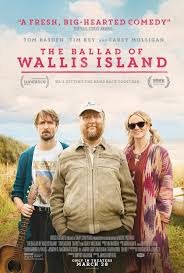
Every once in a while, it’s apleasure to go to a cozy neighborhood theatre and watch an unheralded indiefrom somewhere far away. It helps, of course, if the actors are spot-on, thescenery is beautiful, and the message is life-affirming, though not corny.That’s how I felt after seeing The Ballad of Wallis Island, filmed onthe rugged coast of Wales by a British director I know nothing about. (His name is James Griffiths.) The story is anexpanded version of a BAFTA-nominated short from way back in 2007: "TheOne and Only Herb McGwyer Plays Wallis Island" I don’t know that film atall, but it obviously got enough attention that the talented Carey Mulligansigned on as female lead in the expanded film. But the real key figures are twofriends who both wrote and starred in the original short version, and now fillthe same roles in The Ballad of Wallis Island.
When an actor writes aleading role for himself or herself, there’s always the danger that the filmwill come off as a vanity project. Such is not the case here: while watchingthe film I had no notion that two men I’d never heard of were behind the creationof the characters they played. I only sensed that both Tom Basden and Tim Keywere perfectly cast. Basden, who nicely sings and plays guitar, has the role ofHerb McGwyer, a once-popular folk singer who has never gotten past the loss ofhis performing partner, Nell Mortimer (Mulligan). (Think of them as the Ian and Sylvia of theirday.) Herb may have once been a star, but now he’s something of a sad sack,hurting for money and feeling that the world has passed him by. He’s beeninvited to Wallis Island by an enthusiastic fan, Charles Heath (Key), whoseadoration for the old McGwyer and Mortimer duo has no bounds. Charles—a biglottery winner—lives in solitary splendor, indulging in whims like bringingHerb to his island home for a private concert. What Herb doesn’t know rightaway is that Charles has also invited Nell, who arrives with her new husband in tow. Uh oh! Everyone is mostly politein a veddy British way, but the tension has suddenly ratcheted up to eleven.
Basden and Key, inparticular, are experts at playing off one another. The tall, lanky Basdenendures all sorts of bad luck. Upon arrival at the island he falls into theocean, drenching his luggage. His iPhone gets accidentally immersed more thanonce, necessitating a bowlful of rice that ends up contributing to the plot insurprising ways. And he never quite manages to take a bath without his hostpopping in to see how he’s doing. We never laugh at Basden’s woes, because heseems like a man who’s suffered deep disappointments. But Key, as his oppositenumber, is hilarious. He loves playing the cheery host to his celebrity guests,and—probably from years of living alone—has developed a stream of puns andother babble that he inflicts on anyone within earshot. (Watching him try toplay a solo game of tennis is worth the price of admission.) He’s funny and lovable and extremelyaggravating, all at the same time. But it takes a while for us to appreciatehow lonely he must be.
There are a few other importantcharacters, notably the always welcome Mulligan, who beautifully duets withBasden in a key scene. But basically The Ballad of Wallis Island is twofor the show, And I wouldn’t want it any other way.
May 13, 2025
Ronald Colman: A Durable Life
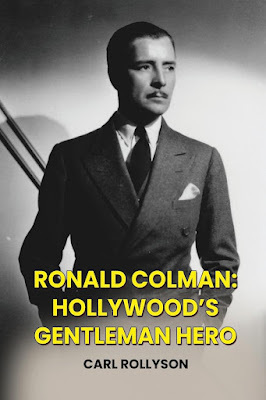
The actor Ronald Colman, known for his dapper mustache and his mellifluous speaking voice, left us in 1958. But lovers of old cinema classics still remember him fondly. I recall my parents chuckling over their memories of 1947’s The Late George Apley and my mother developing a romantic fascination with Shangri-La, thanks to a hit Colman film from 1937, Lost Horizon. I’ve also come across Carol Burnett’s rambunctious take on a 1942 Colman romantic weepy, Random Harvest. (Burnett’s version, called Rancid Harvest, has heaps of fun with the story of a British ex-soldier, suffering from amnesia, who has totally forgotten his marriage to perky Greer Garson.)
Colman’s film career, which stretched from the silent era to 1957, gave him a wide variety of roles. He was a courtly would-be lover in Lady Windermere’s Fan, a silent adaptation of the Oscar Wilde play directed back in 1925 by the great Ernst Lubitsch. He starred as a soldier, a jewel thief, a heroic doctor, an esteemed law professor, and a painter who has gone blind. After multiple Oscar nominations, he finally took home the golden statuette in 1948 for A Double Life, in which he played a Broadway actor so caught up in his portrayal of Othello that he nearly murders his on-stage Desdemona.
How to take in the whole scope of Colman’s illustrious career? My exceedingly prolific colleague Carl Rollyson has written a Colman biography, published in 2024, that’s both extremely thorough and unique in its focus. He has titled it Ronald Colman: Hollywood’s Gentleman Hero. Rollyson’s book contains the elements of many classic biographies: a timeline, a photo section, several useful appendices, a list of sources, and so on. But Rollyson chooses not to start with the familiar cradle-to-grave narrative. Instead, he devotes the long first section of his book to what he calls “A Gentleman’s Work.” Starting with the classic eighteenth-century delineation of gentlemanly behavior in Samuel Richardson’s Sir Charles Grandison, he considers Colman’s film career as a creative working out of an English gentleman’s approach to life. Not that Colman always plays an Englishman; not that he’s wholly typecast as a wealthy aristocrat. Rollyson sees in Colman’s film roles an exploration of truly gentlemanly behavior, often featuring a character who must repent of his flaws and find true nobility within himself. (Colman’s Sydney Carton in 1935’s A Tale of Two Cities certainly rises to the occasion as he heads toward the guillotine.) A particularly interesting section focuses on Lost Horizon, in which Colman’s role as an esteemed British statesman who becomes entranced by the promise of a life of seclusion and peace becomes, in his daughter’s words, “Ronald Colman stepping into his own image.”
After thoroughly exploring the implications of Colman’s career, Rollyson delves deeply into the life itself, helped by input from Hollywood colleagues and from Colman’s daughter Juliet, who in 1975 probed her late father’s psyche in Ronald Colman: A Very Private Person. My favorite discovery is that Colman and his second wife, English actress Benita Hume, had a long, loving, exceedingly playful relationship, one captured in their popular radio broadcast, The Halls of Ivy (1950-52). The show briefly moved to television, but radio was their favorite medium as a couple, because in their later years it gave them more time for friends and for one another. And—who would have thought it?—the pair had a ball playing themselves as supposed next-door-neighbors of the cheap and cranky Jack Benny. He featured them frequently on his own radio broadcasts, with Benny heckling a dignified but prickly Colman, and Benita desperately striving to keep the peace.
May 8, 2025
M is for Matriarch: “Greek Mothers Never Die”
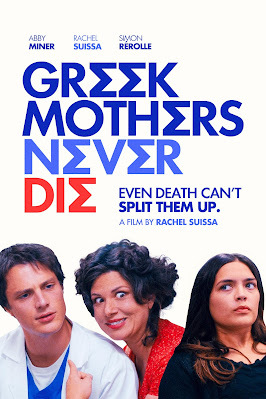
With Mothers Day on the horizon, I’ve started thinking about movies in which mothers are front and center. All kinds of mothers. Noble, self-sacrificing mothers (Stella Dallas). Shrill harridans who make their kids’ lives miserable (Mommie Dearest). In a dark comedic vain, mothers who mean well but drive their children crazy (Throw Momma from the Train).
In a special category are family films showcasing American kids who chafe against the rules and superstitions of their old-world mothers. Such films, comedies with a sharp edge, blend a scrutiny of family relationships with the humor we find in newcomers (or those remaining close to their immigrant roots) who don’t quite fit into their American surroundings. There was a time, back in the early Philip Roth era (let’s say the late 1960s) when Jewish mothers were considered comedy gold. The stereotype of the abrasive, all-consuming Jewish Mother shows up in movies made from works by such hot young novelists as Roth and Bruce Jay Friedman. See, of course, Portnoy’s Complaint (filmed in 1972 with Lee Grant in the mother role). And, in the same category, see portrayals by Shelley Winters in films like Next Stop, Greenwich Village and Over the Brooklyn Bridge.
Of course, other ethnicities have their own humor focused on moms who refuse to let go of what they see as their duty to the families they’ve created. There’s a touch of this in the hit 1987 comedy, Moonstruck, which won Olympia Dukakis an Oscar for her portrayal of the Italian-American family matriarch. Ironically, although Dukakis came from Greek immigrant stock on both sides, she was nowhere to be seen in 2002’s huge indie hit, My Big Fat Greek Wedding, in which Mama was memorably played by Lainie Kazan.
The longterm public enthusiasm surrounding My Big Fat Greek Wedding—which spawned two sequels and a 2003 sitcom—has seemed to propel Greek Americans into the ranks of funny foreigners with crazy accents and wacky beliefs. Just in time for Mothers Day, writer-director-actor Rachel Suissa gives us Greek Mothers Never Die, a well-meaning comedy that juxtaposes an epic mother/daughter clash with the kind of supernatural underpinnings that mark generations of movies like All of Me, Death Becomes Her, and (for those with long memories ) the Topper series.
In the Topper movies and the later TV sitcom, a stuffy bank president is haunted by the ghosts of a fun-loving young couple (originally played by Constance Bennett and Cary Grant) who try to teach him to relax and enjoy life. The dead (and very Greek) mother in Greek Mothers Never Die constantly shows herself to her daughter, an aspiring singer now living on an island in Florida, to dispense maternal wisdom about life’s dangers. In Mama Despina’s mind, olive oil is the nectar of the gods, and pretty much everything else on earth (from butter to pre-marital sex) may well lead to cancer. But though she’ll never dispense with worry and warnings, Despina truly has daughter Ella’s best interests at heart. She can orchestrate a dandy makeover, and knows just which young doctor will be the right future mate for her late-blooming little girl. (A telling moment: on Ella and Nick’s first romantic night together, guess who shows up lying between them?)
This is not the sort of movie in which traditional Greek religion occupies much of a role. The characters hardly feel a deep link to their Greek Orthodox faith. Still, there’s room for some amusing ancient Greek mythological deities (Zeus, Hera, Aphrodite, and so on) to comment on the romantic action. But Mama is the true deus ex machina here.
The film is released by Gravitas Ventures and is now available on AppleTV+
May 6, 2025
Dancing Through Life: Patrick Adiarte
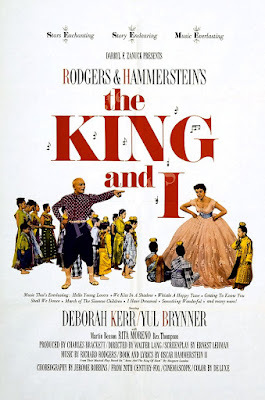
Sometimes when you read an obit of a showbiz figure, you are propelled back in time to movies you truly loved in your formative years. That’s what happened to me when I read about the death of dancer Patrick Adiarte at age 81. The name itself meant nothing to me. But when I read Adiarte’s credits, I realized that he had featured roles in two of my long-ago favorite musicals, one released in 1956 and the other in 1961. Now I can still see him in my mind’s eye, adding immeasurably to movies in which, as a teenaged actor, he shone brillliantly.
Born in the Philippines, Adiarte inherited his mother’s gift for dance. The two of them performed together on Broadway in The King and I (in which they were supposed to be Thai) as well as Flower Drum Song (where they portrayed Chinese Americans). (All Asian-American performers know that, while there aren’t many stage or screen roles specifically intended for those of their ethnicity, they are allowed by custom to slip into any part requiring an “exotic” look.)
Though young Patrick was a well-trained dancer, his role in the stage and screen version of The King and I hardly required him to bust out the dance moves. He played Prince Chulalongkorn, the King’s number one son and potential heir to the throne. What I remember from the screen version of this role is the tremendous dignity with which he conveyed his royal status. Just by noticing the shoulders-back chest-up manner in which he stood and walked. I grasped that this young prince was determined to serve his people to the very best of his ability, whenever it was his fate to assume the throne. Those who love The King and I will remember the important role Prince Chulalongkorn plays at the story’s end, while his father (Yul Brynner) is languishing on his deathbed and it falls to this young boy—in a moment of intense grief—to take command.
Flower Drum Song provided Adiarte with quite a different role. In this romantic story set in San Francisco’s Chinatown, the older brother (James Shigeta in the movie) is caught between his yen for a sexy nightclub dancer (Nancy Kwan) and his growing appreciation for the picture-bride who has been imported for him from the Old Country (Miyoshi Umeki). Adiarte’s role was that of Shigeta’s impish brother, Wang San. Too young to be concerned about the prospect of an arranged marriage, he’s an All-American scamp, outraging the tradition-minded older family members and generally having boyish fun. Throughout most of the film, I recall him decked out in a Little League baseball uniform. In Flower Drum Song Adiarte gets full opportunity to sing and dance (notably in a comic number called “The Other Generation”), and he makes the most of it.
Adiarte was featured in five movies in all, and made many TV appearances, most of them capitalizing on his “exotic” appearance. He played a Middle Eastern prince in the comic film, John Goldfarb, Please Come Home, a Native American on Bonanza, and an islander on Hawaii Five-O His best TV role was as a Korean, Ho-Jon, on seven episodes of M*A*S*H. He must have especially enjoyed his guest appearance on a Gene Kelly TV special, one that occurred around the time of Flower Drum Song. There’s no ethnic cuteness here, just some bravura tap-dancing alongside Kelly. Am I allowed to say it? I think Pat outshines the master.
When he was no longer young and cute, Adiarte retired from performing, going on to teach dance.. Surely a life well lived.
Dedicated to my fellow dance enthusiast, Barbara Trainin Blank.
May 2, 2025
“The Residence”: A House is Not a Home
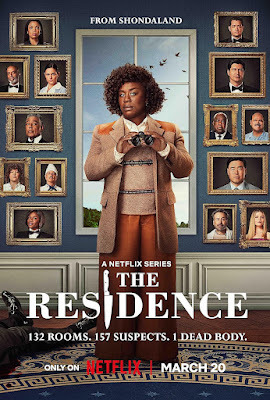
It’s a classic location for a murder mystery: the grand old house that perhaps has seen better days. What can be grander and older than 1600 Pennsylvania Avenue, the home of every U.S. president since John Adams? And, at this time of political turmoil and stark predictions of disaster, it’s easy indeed to imagine something going very wrong in the east wing, where visitors come and go, and unlikely cronies of those in power take up residence for the long haul.
Not that Shonda Rimes’ eight-part miniseries, The Residence, pretends that it’s talking about what’s actually going on in today’s Washington. Political parties are never mentioned, and the President is contending with such in-house challenges as a scruffy kleptomaniac brother, an acerbic and hard-drinking mother-in-law, and a same-sex husband whom no one seems to respect. A major terrorist attack the previous March has left everyone on edge, but life continues thanks to a well-trained staff (waiters, housekeepers, maintenance workers, gardeners, chefs) presided over by a formidable Chief Usher . . . . until all hell breaks loose.
That first episode, in which the murder is discovered midway through a state dinner with the Australian diplomatic corps, is whimsically titled “The Fall of the House of Usher.” Fans of old murder mystery flicks will be amused at how each episode borrows the title of an appropriate classic, like Knives Out, The Last of Sheila, or The Trouble with Harry. Climactic episodes 7 and 8 initially struck me as oddly named: who ever heard of a movie called The Adventures of the Engineer’s Thumb or The Mystery of the Yellow Room? It turns out, though, that these are old prose works (one written in French and one featuring Sherlock Holmes) that were indeed put on film many decades ago.
The tone of the series—witty but dark, with enough genuine emotion to keep us interested—is set by the detective brought in to solve the case. No, not Sherlock Holmes, but someone equally eccentric, and a lot more lovable. Uzo Aduba, late of Orange is the New Black, is Cordelia Cupp, a solid presence, no-nonsense but not without empathy. She excels at detective work, but her real passion is for birding, and she somehow manages to make the two activities seem compatible, with the one helpfully informing upon the other. Her unflappability is highly useful in these circumstances, given the hysteria going on all around her. She’s matched with a young FBI sidekick (Randall Park) who at first regards her with suspicion, but their evolving relationship is such that there’s hope they’ll be re-matched in future adventures.
There are, of course, lots of other interesting folks along for the ride, including a loud-mouthed member of the wait staff, a prickly pastry chef, the president’s manic social secretary, and a staff engineer who’s sweetly protective of one of the housemaids. They all bear grudges against the victim, but the whodunit revelation in episode eight is well staged, taking advantage of the complicated architecture of the White House’s upstairs floors for one startling revelation.
Australian songstress Kylie Minogue has a small but key role, and the script enjoys poking fun at fellow Aussie Hugh Jackson, who is mentioned in every episode but never quite seen on camera. I should also mention the closing dedication to Andre Braugher, who was cast, back in 2022 in the central role of Chief Usher A. B. Wynter, but died midway through the shoot. The Residence is dedicated to his memory, and his role is more than ably filled by Giancarlo Esposito, as a man you love to hate.
April 29, 2025
The Unexpected Mrs. Nixon, Superstar
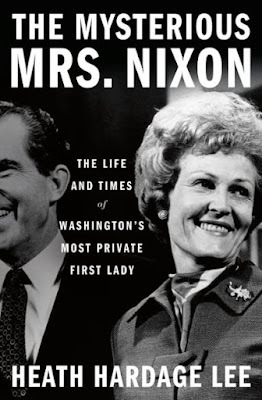
Hollywood has always had asoft spot for movies about presidents. Both satiric comedies and heartfeltdramas have featured an American president in a leading role. There’s even amusical—an adaptation of the stage hit 1776—that features the songstylings of future U.S. presidents John Adams and Thomas Jefferson.
Of all the American.presidents, it is Abraham Lincoln who has earned the most screen time. He’sbeen portrayed by Walter Huston in 1930; by Henry Fonda (as Young Mr. Lincoln) in1939; by Raymond Massey in 1940’s Abe Lincoln in Illinois; and by anOscar-winning Daniel Day-Lewis in 2012’s Steven Spielberg Civil War-era epic,simply called Lincoln. This is not to mention a more eccentric 2012flick, Abraham Lincoln: Vampire Hunter.
Among 20th centuryAmerican presidents, the inspirational story of Franklin Delano Roosevelt contendingwith polio gave rise to 1960’s Sunrise at Campobello. OliverStone’s JFK (1991) is lessabout John F. Kennedy than about the nagging questions behind hisassassination. The up-and-down career of Bill Clinton was pseudonymouslyhandled in 1998’s Primary Colors, in which John Travolta portrays aClinton-like presidential rogue.
Then there’s Richard Nixon,whose checkered presidency has been scrutinized in everything from abiographical drama (1995’s Nixon, starring Anthony Hopkins) to anintimate fact-based post-resignation film (2008’s Frost/Nixon) to a wacky comedy, 1999’s Dick. In all of thesesettings, there’s a role for First Lady Pat Nixon, but she’s always aperipheral character.
That remains true of mostFirst Ladies. Moviemakers are not terribly interested in their stories, exceptas they intersect with their husbands’ moments of high drama. (The one bigexception is Jacqueline Kennedy, whose post-White House life as the tragicyoung widow of JFK confirmed her movie star potential. Natalie Portmanportrayed her in 2016’s Jackie, earning herself an Oscar nomination.)
I don’t think anyone is aboutto make a movie with Patricia Ryan Nixon at its center. In her lifetime(1912-1993), Pat was known as the spouse of Dick Nixon, as an apparently primand proper helpmeet good at smiling and waving. But my friend and colleague,Heath Hardage Lee, has recently published a biography that turns the spotlighton someone who preferred to remain in the background. Lee’s book, TheMysterious Mrs. Nixon: The Life and Times of Washington’s Most Private FirstLady, was recently named to the longlist for Biographers InternationalOrganization’s prestigious 2025 Plutarch Award. This well-researched biographyexplores Pat Nixon’s many appealing qualities—her personal grit, her greatskill as a goodwill ambassador roaming the world on the nation’s behalf, herstrong commitment to preserving her country’s history and institutions. There’salso, eventually, some revelations about the way her husband’s shadier aidestried—in the second Nixon term—to curb her enthusiasm for the First Lady’straditional mandate to further her spouse’s White House goals. To read aboutPat’s efforts to enhance the role of women in American government and on itscourts is to be impressed by a First Lady who was in some ways well ahead ofher time.
Heath Lee’s book, whichcontains the fruits of interviews with many Nixon aides, friends, and familymembers, portrays its subject as a woman well worth knowing, even by those whowere not fans of her husband’s politics. One of many surprises: Pat and Dickhad a cordial and long-lasting relationship with Jack and Jackie Kennedy, bothbefore and after the brutal 1960 presidential race that set them against oneanother. What I learned in reading The Mysterious Mrs. Nixon is thatit’s fascinating to read about the woman who willingly stood behind the famousman.
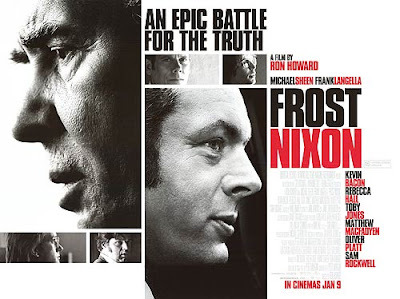
April 25, 2025
R.I.P. Val Kilmer (and Tombstone’s Doc Holliday)
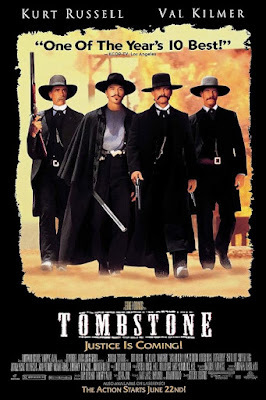
Sometimes it seems that ValKilmer made a specialty of portraying men who die young. At least, that’s theimpression I got after watching his electrifying performances as Jim Morrisonin The Doors (1991) and as a tubercular Doc Holliday in Tombstone (1992).Still, Kilmer remained very much alive as the warrior Madmartigan in GeorgeLucas and Ron Howard’s fantasy epic Willow (1988), in which he wasupstaged by tiny Warwick Davis but also chanced to meet his real-lifewife-to-be, Joanne Whalley. (They fell for one another on the set, and Howardobligingly re-shot their love scenes to take advantage of the budding romance.Fairytales do tend to come to an end, however. Though they wed in 1988 and hadtwo children together, the couple divorced in 1996.)
Kilmer’s “Iceman” characterin Top Gun (1986) was also a survivor, living long enough to show up inthe film’s decades-later sequel, Top Gun: Maverick. Still, when thesequel was shot in 2022, Kilmer’s voice was so affected by treatments forthroat cancer that it had to be digitally altered to add clarity. Sadly, TopGun: Maverick was Kilmer’s final performance. He died on April 1, 2025: atsixty-five he was by no means a youngster, but many of us had hoped foradditional cinematic brilliance from him.
Tombstone, at its essence, is essentially the story of twogangs—a group of local Arizona lawmen (three of them brothers) versus a looselyorganized cluster of cattle rustlers and horse thieves who called themselvesthe Cowboys. At the infamous Gunfight at the O.K. Corral, several men on bothsides went down. The thirty-second shootout was followed up by laterskirmishes, in which much blood was shed on both sides. Various versions of thestory—which became widely known only after Earp’s death and a popular bookabout him—show up in a number of films, starting with 1939’s FrontierMarshal, which starred Randolph Scott and Cesar Romero. Then there was JohnFord’s 1945 My Darling Clementine followed by the 1957 Gunfight atthe O.K. Corral, which starred Burt Lancaster as Wyatt Earp and KirkDouglas as his buddy, Doc Holliday.
I suspect that Tombstone,directed by George P. Cosmatos, was intended to be the lastword on the subject. Certainly, its cast is chockful of famous names. It seems as though every red-blooded male inHollywood wanted to take part in this semi-true tale of law-and-order on theAmerican frontier. In addition to Kilmer and top-billed Kurt Russell (asreluctant lawman Wyatt Earp), the film features such established names asPowers Boothe, Sam Elliott, Bill Paxton, Jason Priestley, Thomas Haden Church,and Billy Zane. Dana Delany of China Beach fame is the female lead in a moviethat is predictably short on women’s roles. (Yes, she plays a gal with a checkered sexual history.)Ageing Charlton Heston , not long before his 2002 retirement from acting, takeson a small but key part in the proceedings, and none other than Robert Mitchumserves as the film’s narrator.
Though Tombstone pitslawmen against renegades, the story is such that it’s often hard to tell themapart. Earp and Holliday seem at times no less bloodthirsty than the Cowboys.This puts me in mind of the response, back in 1967, to Arthur Penn’s Bonnieand Clyde, decried then by many for its level of on-screen violence. Asfilm scholar Robert Alan Kolker put it, “Penn showed the way: Bonnie and Clyde opened the bloodgates, and our cinema has barely stoppedbleeding since.” Now Bonnie andClyde seems rather tame. Today, there will be blood.
April 22, 2025
Feeling “A Real Pain” on Holocaust Remembrance Day
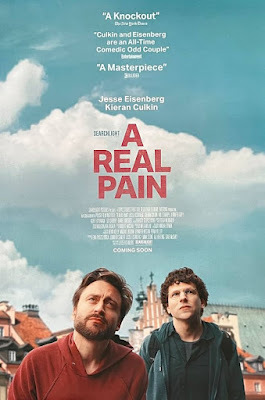
April 23, which falls just after the joyous Passover season, is the date of this year’s Yom HaShoah, also known Holocaust Remembrance Day. It commemorates, especially in Israel, the approximately six million Jews senselessly slaughtered by the Nazi regime before and during World War II. Among local U.S. commemorations, I’ve just read about one planned for the very Catholic Loyola-Marymount University. But I was particularly struck by the upcoming event at UCLA Hillel, which plans to feature the screening of Jesse Eisenberg’s Oscar-honored 2024 film, A Real Pain.
What makes this choice so interesting is the fact that A Real Pain is not your average Holocaust movie. It’s not set during or immediately after what’s known as the Shoah. No one is in hiding, and we see no atrocities. (See, by contrast, such fine international films as Schindler’s List;, Au revoir les enfants; Europa Europa; Life is Beautiful; The Pianist; and Ida.) A Real Pain, set in the present day, focuses on two American cousins whose distant Holocaust connection is their recently deceased Grandma Dori. In her will, she left the two young men the money for a brief heritage trip to Poland, where they could visit her former home and soak up the culture that made her the lifeforce she was. (No, she was not herself a Holocaust survivor, but any trip to Poland cries out for an acknowledgment of what happened on its soil.)
In the course of their brief trip, we get to know their small group of fellow travelers: a mature married couple, an anxious divorcee, a deeply spiritual convert to Judaism who is a survivor of genocide in his native Rwanda. But the focus is on the two cousins: the tense, deeply-focused David (played by Eisenberg) and the free-spirited Benjy (Kieran Culkin), who mails a stash of weed to their first hotel and insists that David share it with him on the off-limits hotel roof. Part of the pleasure of the early going is seeing Benjy interact with his tightly-wound cousin, charming the other travelers with his ready sense of fun. Benjy also shows himself to be sensitive to their personal anxieties, but his manic insistence—as a Jew in Poland—on refusing to accept comfy first-class train accommodations leads to a worrisome outcome for all concerned. Gradually Benjy’s deeply troubled psyche comes into focus, along with David’s personal difficulty in accepting his cousin’s underlying sadness.
That’s when the little group pays a visit to the Nazi concentration camp known as Majdanek. (The film was shot almost entirely in Poland, with the full cooperation of the Polish government, which eventually made Eisenberg—a descendant of Polish Jews—an honorary citizen.) It’s a quiet and eerie segment, capturing the reverent silence with which the travelers absorb what little was left behind by their slain Jewish ancestors. No jokes here; Benjy is, for once, in full control of his behavior.
What follows, for the cousins is the long-awaited brief stop at the apartment complex where their grandmother once lived. It’s somewhat gratifying, somewhat not, to find themselves walking in her footsteps. In any case, the film ends as it ought to, with some smiles, some hugs, and some big questions. Benjy’s and David’s complicated inner worlds can’t be entirely blamed on the Holocaust, from which they are two generations removed and a continent away. But, over the years, I’ve known the children and grandchildren of Holocaust survivors. They’ve been spared the agonies we know about, but their lives are still stamped with the aftereffects of what happened back then . . . what shouldn’t happen to anyone.
Beverly in Movieland
- Beverly Gray's profile
- 10 followers



